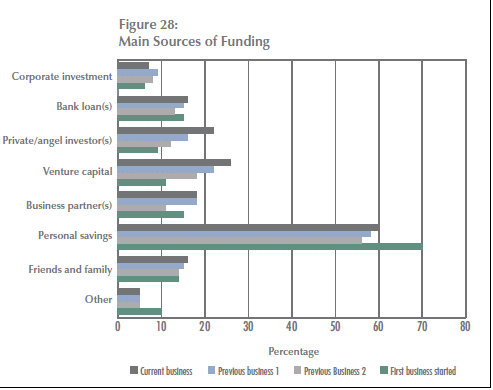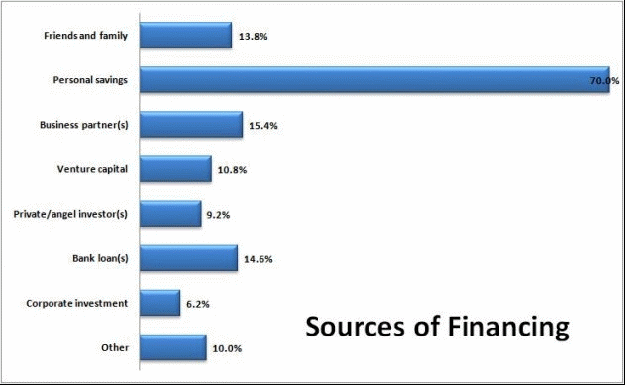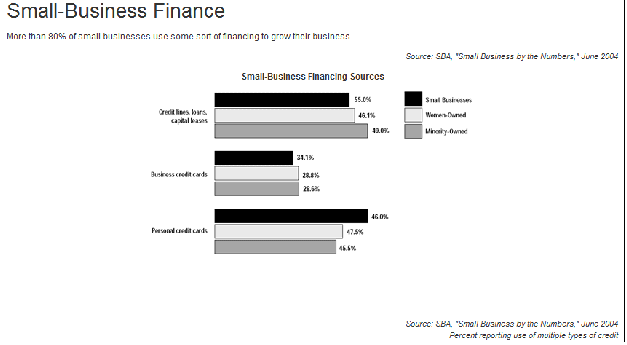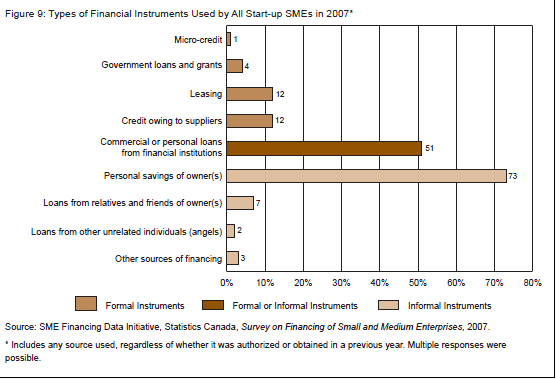Self Employment
In a just society, more risk equals more reward. However, people often find a way to use other people’s money so that the risk is transferred to others, while the business owner enjoys the reward. This may take the form of government funding through SBA loans, or raising money from others who don’t really understand the risks, or taking loans and not repaying them of the venture fails. In the era of government bailouts beginning in 2008, a common criticism of business was the idea of “privatizing the gains, socializing the losses”. A real entrepreneur shares takes on risk, not just reward.
Following excerpt is from the article —
Making of A Successful Entrepreneur: Anatomy of an Entrepreneur Part II (Kauffman Foundation Small Research Projects Research Paper No. 2) November 17, 2009
by Vivek Wadhwa (Duke University – Pratt School of Engineering; Harvard University – Labor and Worklife Program), Raj Aggarwal (University of Akron – Department of Finance), Krisztina Holly (University of Southern California) and Alex Salkever (Duke University – Pratt School of Engineering)
(Note: it is the most recent study by well recognized universities on this is subject, see page 19 of the attached original report, http://papers.ssrn.com/sol3/Delivery.cfm/SSRN_ID1507384_code738704.pdf?abstractid=1507384&mirid=5 )
Sources of Funding
We asked survey respondents a series of questions about their business background and sources of funding. We asked about their most recent business, two previous businesses, and their first business. We present an analysis of the sources of funding for businesses started by serial entrepreneurs.
We learned that the most significant source of funding for all businesses started by respondents was their personal savings: 70 percent said they had used personal savings as a main source of funding for their first businesses, more than four times the number for any other category. Even in subsequent startups, more than half of the entrepreneurs relied on their personal savings.
Friends and family and bank loans were a source of funding for around 13 percent to 16 percent of our sample. Venture capital and private/angel investments played a role in the first startups of only a few entrepreneurs: just 11 percent received venture capital, and 9 percent received angel financing. But the proportion of entrepreneurs who take angel and venture funding increases with each subsequent business launch by the entrepreneur. The percentage of the sample of serial entrepreneurs receiving venture capital for their latest startup was 26 percent and 22 percent received private/angel financing.

The same above study results are summarized again on the following article, the data are represented in a better bar chart.
TechCrunch Readers: God is Your Co-Pilot, and Stuff that Piggy Bank
Saturday, November 21, 2009

Figure Source: http://cache0.techcrunch.com/wp-content/uploads/2009/11/sources-of-financing-630×388.jpg
American Small Business Start-up Financing Sources:
Friends and family — 14%
Personal savings — 70%
Business partner(s) — 15%
Venture capital — 11%
Private/angel investor(s) — 9%
Bank loan(s) — 15%
Corporate investment — 6%
Other — 10%

Source:
http://www.entrepreneur.com/sbe/smallbusiness/index.html
As of Small Business administration’s report titled as “Small Business by the numbers”, more than 80% of small businesses use some sort of financing to grow their business:
Credit lines, loans capital leases — 55%
Business credit cards — 34%
Personal credit cards — 46%
Commercial banks and other depository institutions are the largest lenders of debt capital to small businesses. They accounted for almost 65 percent of total traditional credit to small businesses in 2003. (This includes credit lines and loans for nonresidential mortgages, vehicles, equipment, and leases.) Credit cards account for much of the growth in small business lending over the past few years (from “Frequently Asked Questions — Advocacy: the voice of small business in government” report of SBA).
Canada:
The following information is from the report “Key Small Business Financing Statistics December 2009” of Canada covers small and medium-sized enterprises key small business financing statistics.

(See page 20 of http://www.sme-fdi.gc.ca/eic/site/sme_fdi-prf_pme.nsf/vwapj/KSBFS-PSFPE_Dec2009_eng.pdf/$FILE/KSBFS-PSFPE_Dec2009_eng.pdf )
Canadian Small Business Start-up Financing Sources:
Micro-credit — 1%
Government Loans and Grants — 4%
Leasing — 12%
Credit owing to suppliers — 12%
Commercial or Personal Loans from Financial Institutions — 51%
Personal Savings of Owner(s) —73%
Loans from relatives and friends of owner(s) — 7%
Loans from other unrelated individuals (angels) — 2%
Other sources — 3%
Usage of each type of Finances by UK startups in Percentage:
Types of finance and percentages:
Personal savings — 69%
Gifts from friends and family — 1%
Friends and family loan — 13%
Bank loans — 20%
Credit cards — 3%
Overdraft — 2%
Grants or subsidized loan — 3%
None — 6%
Home equity — 7%
Other — 4%



